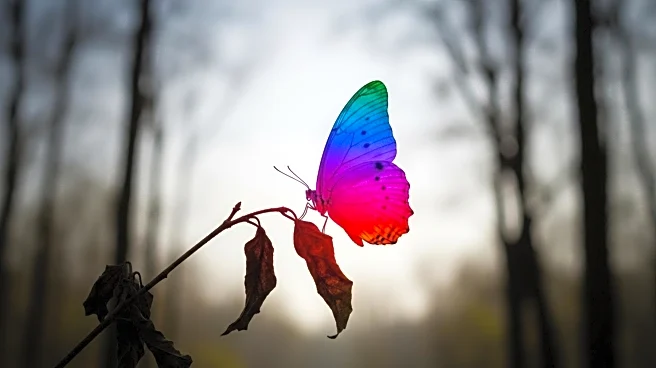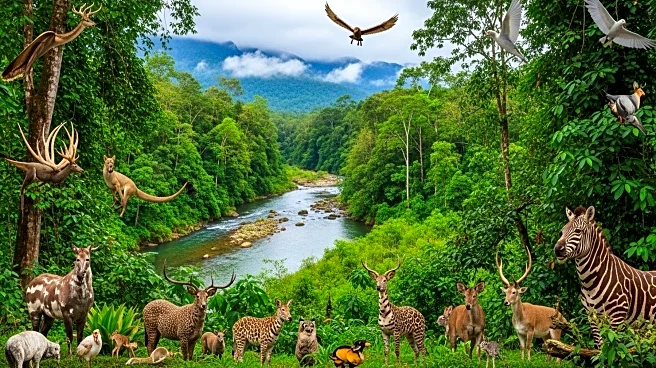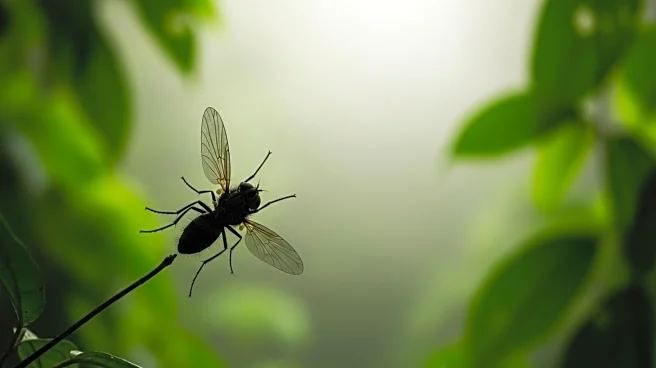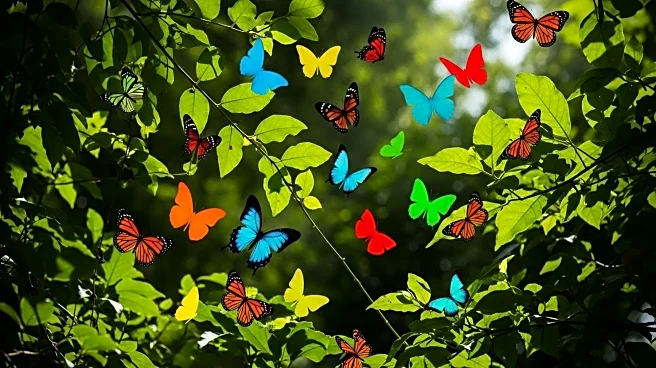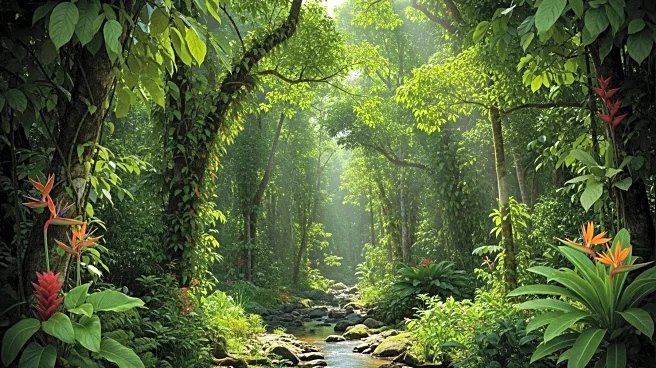What is the story about?
What's Happening?
A recent study conducted in Brazil has revealed that deforestation is causing a significant loss of color in butterfly populations. The research, led by Roberto García-Roa, documents how habitat loss is leading to a bleaching effect in the natural world, particularly affecting butterflies. These insects, known for their vibrant colors, are losing their hues as tropical forests are replaced by monocultures like eucalyptus plantations. The study found that butterflies in these plantations are predominantly brown, contrasting with the colorful species found in native forests. This change is attributed to the altered ecological conditions in plantations, which favor drab species. The findings are part of a broader research initiative examining 'discoloration' in nature due to human activities.
Why It's Important?
The loss of color in butterflies is not just an aesthetic issue; it has significant ecological implications. Butterflies are indicators of biodiversity, and their color diversity reflects the complexity of ecosystems. A decline in their color diversity suggests a loss of ecological functions and interactions that depend on color signals. This could have cascading effects on other organisms and ecological processes. The study highlights the urgent need to protect native habitats to preserve biodiversity and ecological balance. The findings also underscore the interconnectedness of environmental changes and their impact on the natural world.
What's Next?
The research suggests that protecting and restoring native habitats could help reverse the trend of color loss in butterflies. Regenerating forests, as seen in some areas of the Amazon, have shown an increase in butterfly color diversity. This indicates that conservation efforts can restore ecological functions and biodiversity. The study calls for more research to understand the global impact of monoculture plantations and to develop strategies for preserving nature-rich forests.
Beyond the Headlines
The study opens up new areas of research on how habitat loss shapes biodiversity. It reveals a hidden dimension of species response to environmental change, emphasizing the importance of color in ecological interactions. The findings challenge the perception of monoculture plantations as 'green' and highlight the need for sustainable land management practices.
AI Generated Content
Do you find this article useful?
